The traditions of an Indian wedding
Indian weddings are a vibrant blend of culture, tradition, and festivity. They are grand affairs, filled with color, emotion, and ritual.
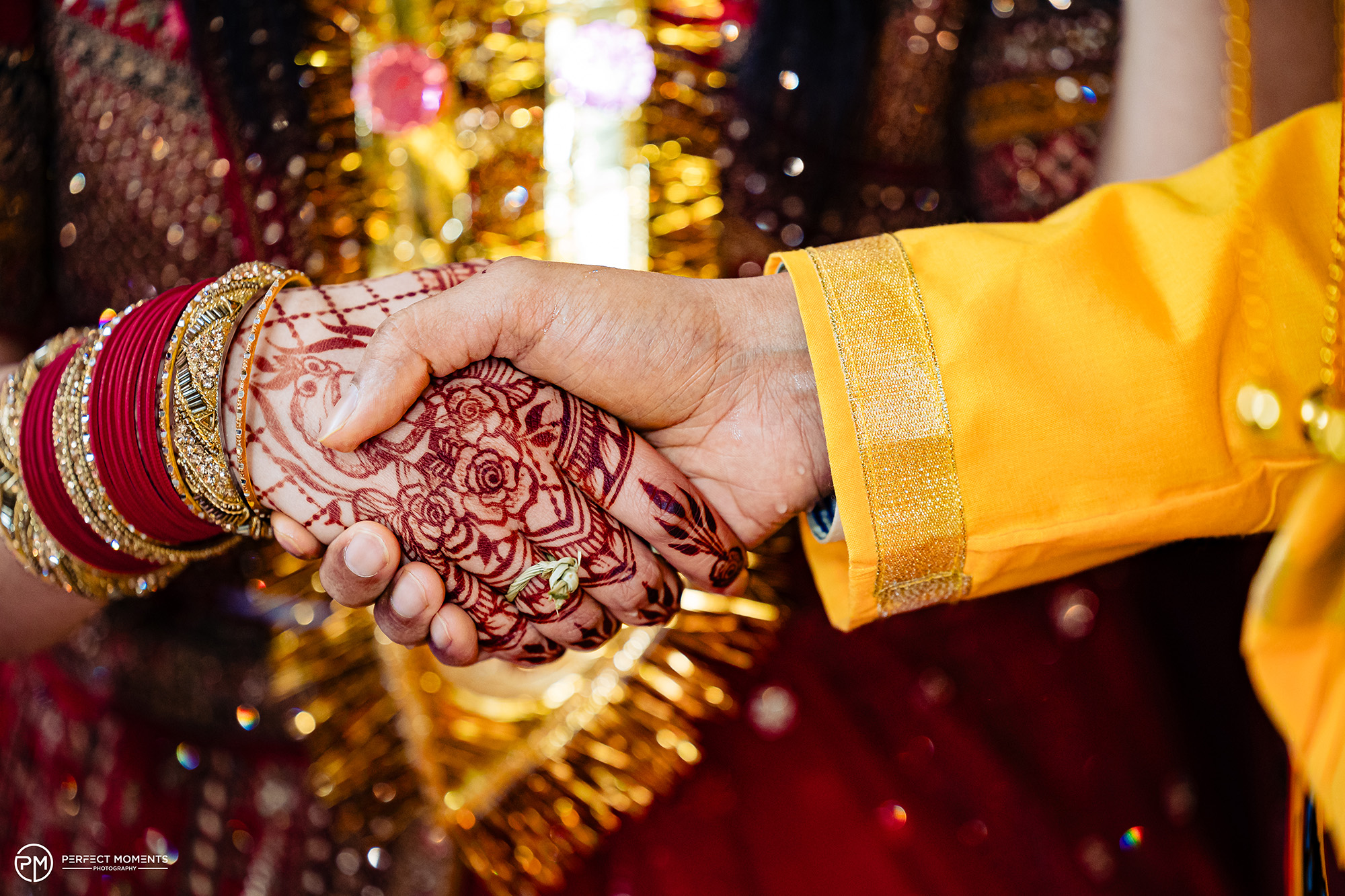
Each ceremony is steeped in symbolism and meaning. From the intricate designs of the Mehendi to the sacred vows of the Saat Phere, every ritual tells a story.
But Indian weddings are not just about the couple. They are a celebration of two families coming together. The joy and camaraderie are palpable, as relatives and friends partake in the festivities.
This article delves into the rich tapestry of Indian wedding traditions. It explores the significance of various ceremonies, the role of wedding gifts, and the importance of wedding photography.
Whether you're attending an Indian wedding, planning one, or simply curious about the culture, this guide will provide a comprehensive understanding of these beautiful traditions.
The Essence of Indian Wedding Traditions
Indian weddings are a beautiful amalgamation of age-old traditions and customs. They are a reflection of the country's rich cultural heritage. Each ritual, each ceremony, has a deep-rooted significance.
The essence of Indian wedding traditions lies in their symbolism. For instance, the 'Saat Phere' or seven circumambulations around the sacred fire represent the seven vows of marriage. Each vow is a promise, a commitment to love, respect, and support each other.
Similarly, the 'Mangalsutra', a necklace worn by the bride, symbolizes her marital status. It is a token of love and respect from the groom. The 'Sindoor' ceremony, where the groom applies a red powder to the bride's hair parting, is another significant ritual, signifying marriage.
These traditions are not just about the couple. They involve the entire family, symbolizing the union of two families, not just two individuals. From the 'Baraat', the groom's wedding procession, to the 'Vidaai', the bride's farewell, each ceremony is a family affair.
In essence, Indian wedding traditions are a celebration of love, family, and togetherness. They are a testament to the country's rich cultural tapestry.
Pre-Wedding Rituals: From Mehendi to Sangeet
Indian weddings are not just about the wedding day. The celebrations begin days before with a series of pre-wedding rituals. Each of these ceremonies is a unique blend of fun, emotions, and traditions.
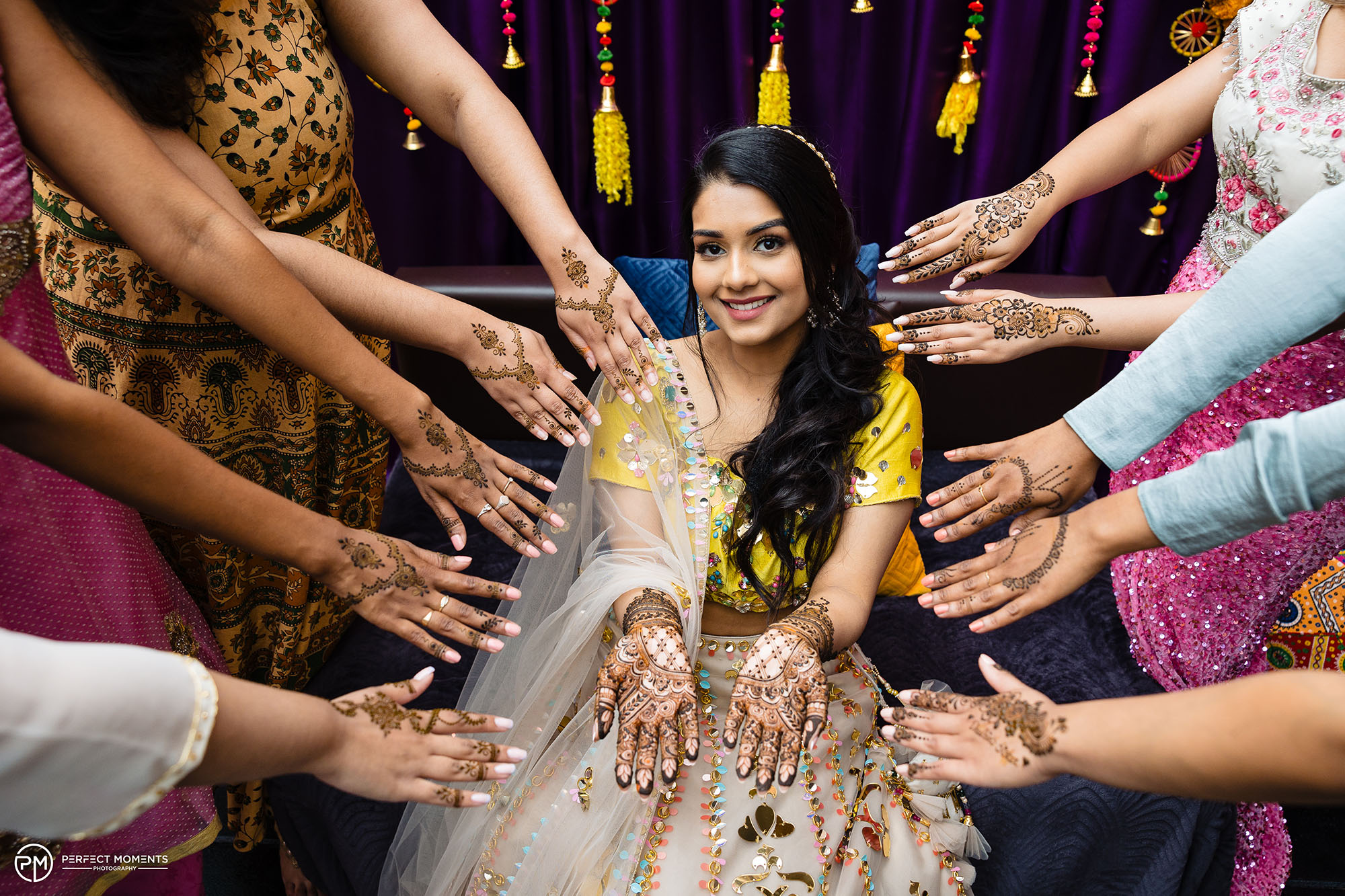
The Colorful Mehendi Ceremony
The 'Mehendi' ceremony is a vibrant affair. It involves the application of intricate henna designs on the bride's hands and feet. The designs are often elaborate, showcasing the artist's creativity and skill.
The ceremony is a fun-filled event. It is often accompanied by music, dance, and laughter. The 'Mehendi' is said to signify the strength of love in a marriage; the darker the henna, the stronger the love and bond.
Sangeet: A Night of Music and Dance
'Sangeet' is a musical night that precedes the wedding. Families from both sides come together to perform and enjoy music and dance. It's a night filled with joy, laughter, and camaraderie.
The performances range from traditional folk dances to Bollywood numbers. It's a chance for the families to bond and make memories. The 'Sangeet' is a celebration of the upcoming union, a prelude to the grand wedding.
The Purifying Haldi Ceremony
The 'Haldi' ceremony is a purifying ritual. It involves the application of turmeric paste to the bride and groom. The paste, made from turmeric, sandalwood, and rose water, is believed to bless the couple.
The ceremony is a joyous event, filled with laughter and playful moments. The 'Haldi' ceremony is not just about purification. It's also a way for the families to shower their love and blessings on the bride and groom.
The Wedding Day: A Symphony of Sacred Rites
The wedding day is a grand affair. It's a day filled with sacred rites, emotions, and celebrations. Each ritual has a deep significance, adding to the sanctity of the marriage.
The day begins with the groom's procession, known as the 'Baraat'. It's a lively event, filled with music, dance, and joy. The groom, often on a horse or elephant, is accompanied by his family and friends.
The wedding ceremony takes place under a 'Mandap'. This sacred canopy is beautifully decorated, creating a divine ambiance for the rituals. The 'Mandap' is the center stage for the wedding, a witness to the sacred vows.
The highlight of the ceremony is the 'Saat Phere'. The couple takes seven rounds around the sacred fire, each round signifying a vow. It's a solemn moment, sealing the bond of marriage.
The wedding day is a whirlwind of emotions, traditions, and celebrations. It's a day that leaves an indelible mark on the couple's life, a day they cherish forever.
Baraat: The Groom's Grand Entrance
The 'Baraat' is the groom's grand entrance. It's a lively procession, filled with music, dance, and joy. The groom, often on a horse or elephant, is accompanied by his family and friends.

The 'Baraat' is a symbol of the groom's journey to his bride. It's a celebration of the upcoming union, a prelude to the grand wedding. The groom's arrival is eagerly awaited, marking the beginning of the wedding ceremony.
Mandap: The Sanctified Canopy
The 'Mandap' is the sanctified canopy under which the wedding ceremony takes place. It's beautifully decorated with flowers, fabrics, and lights, creating a divine ambiance for the rituals.
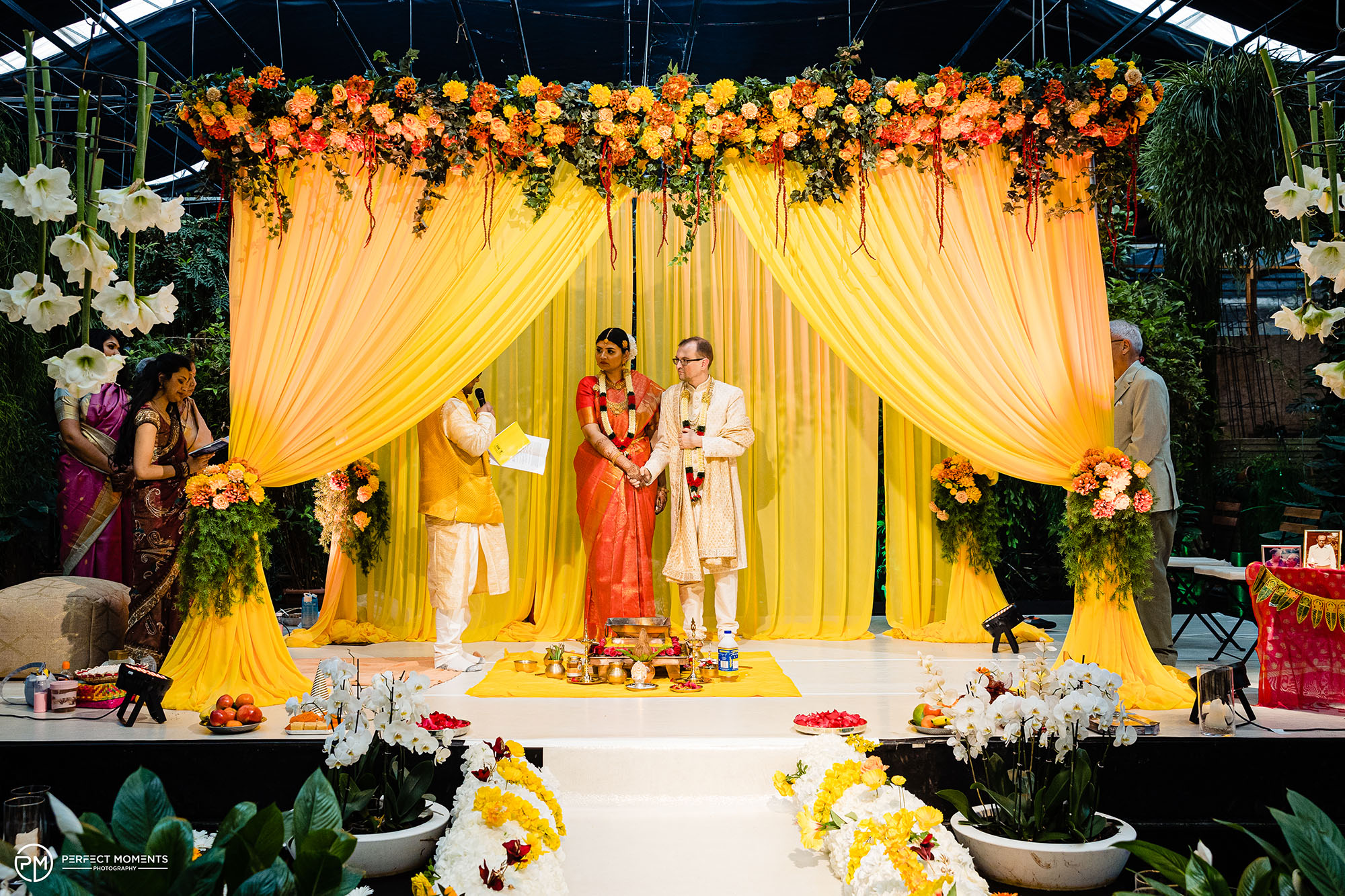
The 'Mandap' is the center stage for the wedding. It's a witness to the sacred vows, the promises made, and the bond sealed. The 'Mandap' is not just a structure; it's a symbol of the sanctity of marriage.
The Sacred Fire and Saat Phere
The 'Saat Phere' is a pivotal ritual in an Indian wedding. The couple takes seven rounds around the sacred fire, each round signifying a vow. It's a solemn moment, sealing the bond of marriage.
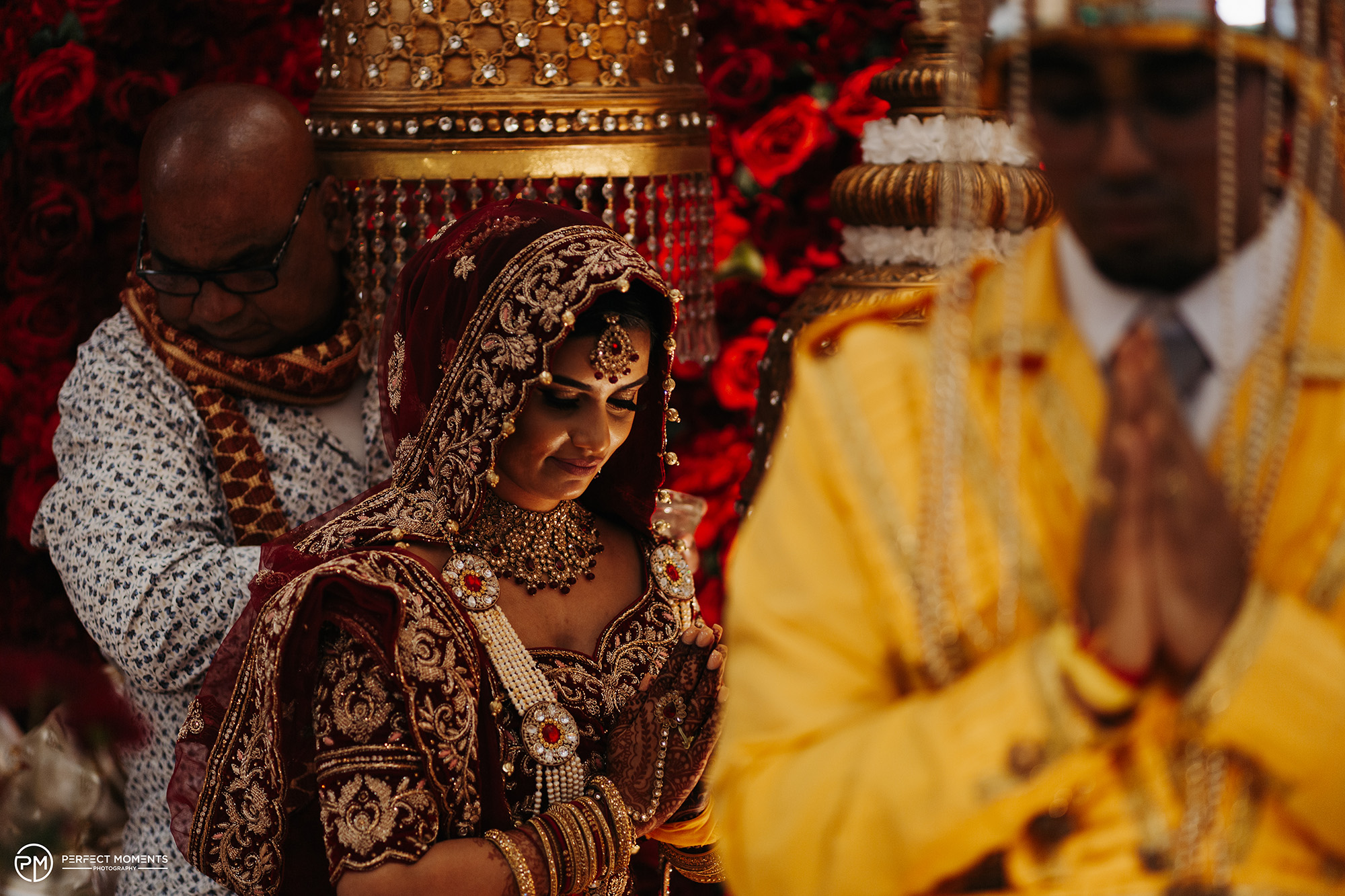
Each of the seven vows has a specific meaning and promise. They cover aspects like love, prosperity, health, and happiness. The 'Saat Phere' is not just a ritual; it's a commitment to stand by each other, in sickness and in health, in joy and in sorrow.
The sacred fire is a divine witness to these vows. It's a symbol of purity, sanctity, and the divine presence. The 'Saat Phere' around the sacred fire is the heart of an Indian wedding, a ritual that binds the couple in a lifelong bond.
Post-Wedding Traditions: Vidaai to Reception
The wedding day doesn't end with the 'Saat Phere'. There are several post-wedding traditions that follow. Each of these rituals marks a new phase in the couple's life.
The 'Vidaai' is an emotional farewell of the bride from her parental home. It's a poignant moment, filled with tears and emotions. The bride leaves her home, embarking on a new journey with her husband.
The bride's arrival at her new home is marked by the 'Griha Pravesh'. It's a welcoming ritual, signifying the bride's acceptance into her new family. The bride steps into her new home, marking the beginning of her new life.
The wedding celebrations conclude with a grand reception. It's a post-wedding celebration for the newlyweds to meet and greet guests. The reception is a joyous event, filled with music, dance, and merriment.
The Emotional Vidaai Ceremony
The 'Vidaai' is an emotional farewell of the bride from her parental home. It's a poignant moment, filled with tears and emotions. The bride leaves her home, embarking on a new journey with her husband.
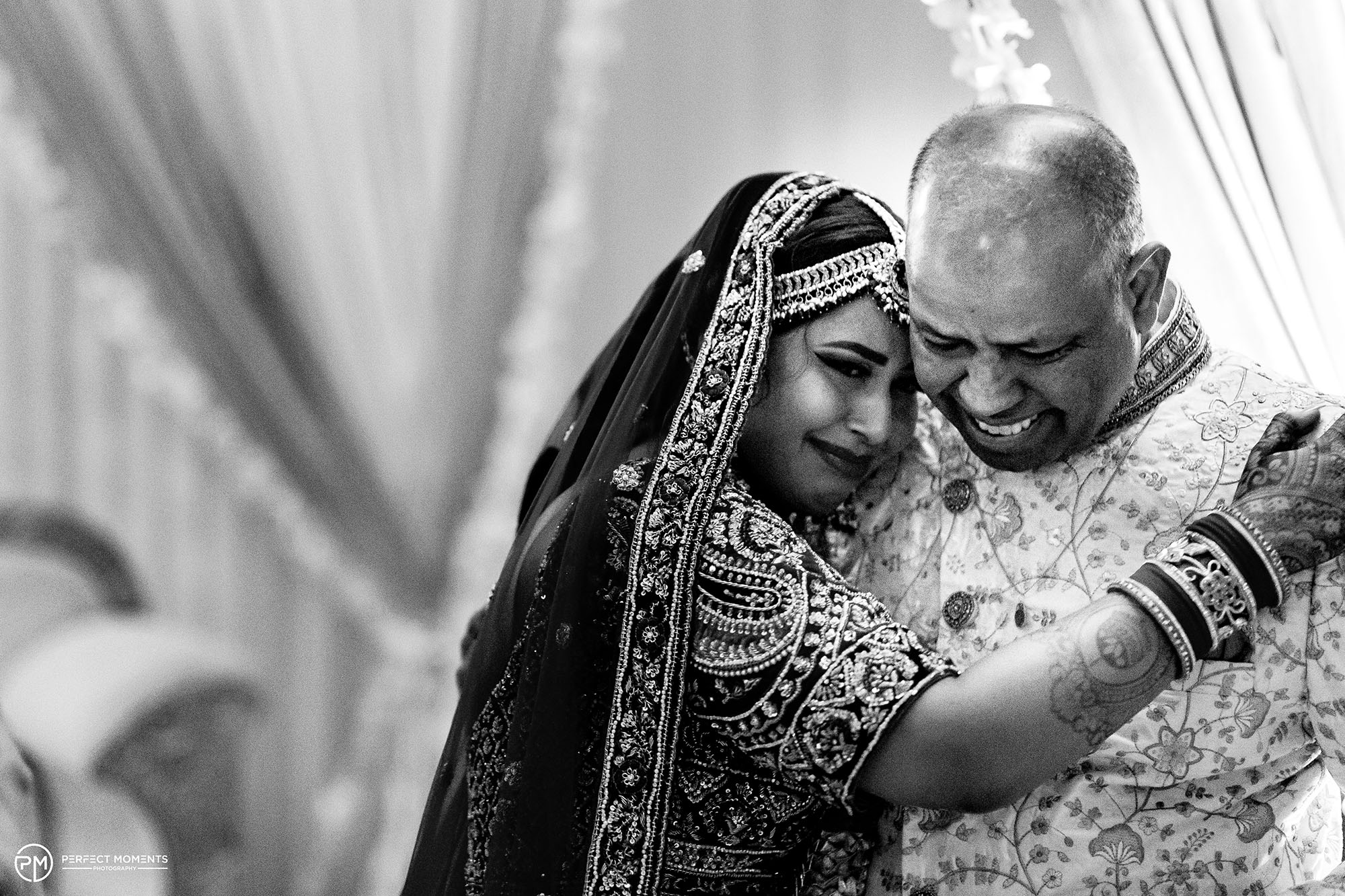
The 'Vidaai' is a symbol of the bride's transition from her maiden home to her marital home. It's a bittersweet moment, a mix of joy and sorrow. The 'Vidaai' is not just a farewell; it's a new beginning, a new chapter in the bride's life.
The Welcoming Griha Pravesh
The 'Griha Pravesh' is the welcoming of the bride into her new home. It's a ritual that signifies the bride's acceptance into her new family. The bride steps into her new home, marking the beginning of her new life.
The 'Griha Pravesh' is a moment of joy and anticipation. It's a moment that marks the bride's transition into her new role as a wife. The 'Griha Pravesh' is not just a ritual; it's a celebration of the bride's new journey.
The Grand Reception Celebration
The wedding celebrations conclude with a grand reception. It's a post-wedding celebration for the newlyweds to meet and greet guests. The reception is a joyous event, filled with music, dance, and merriment.
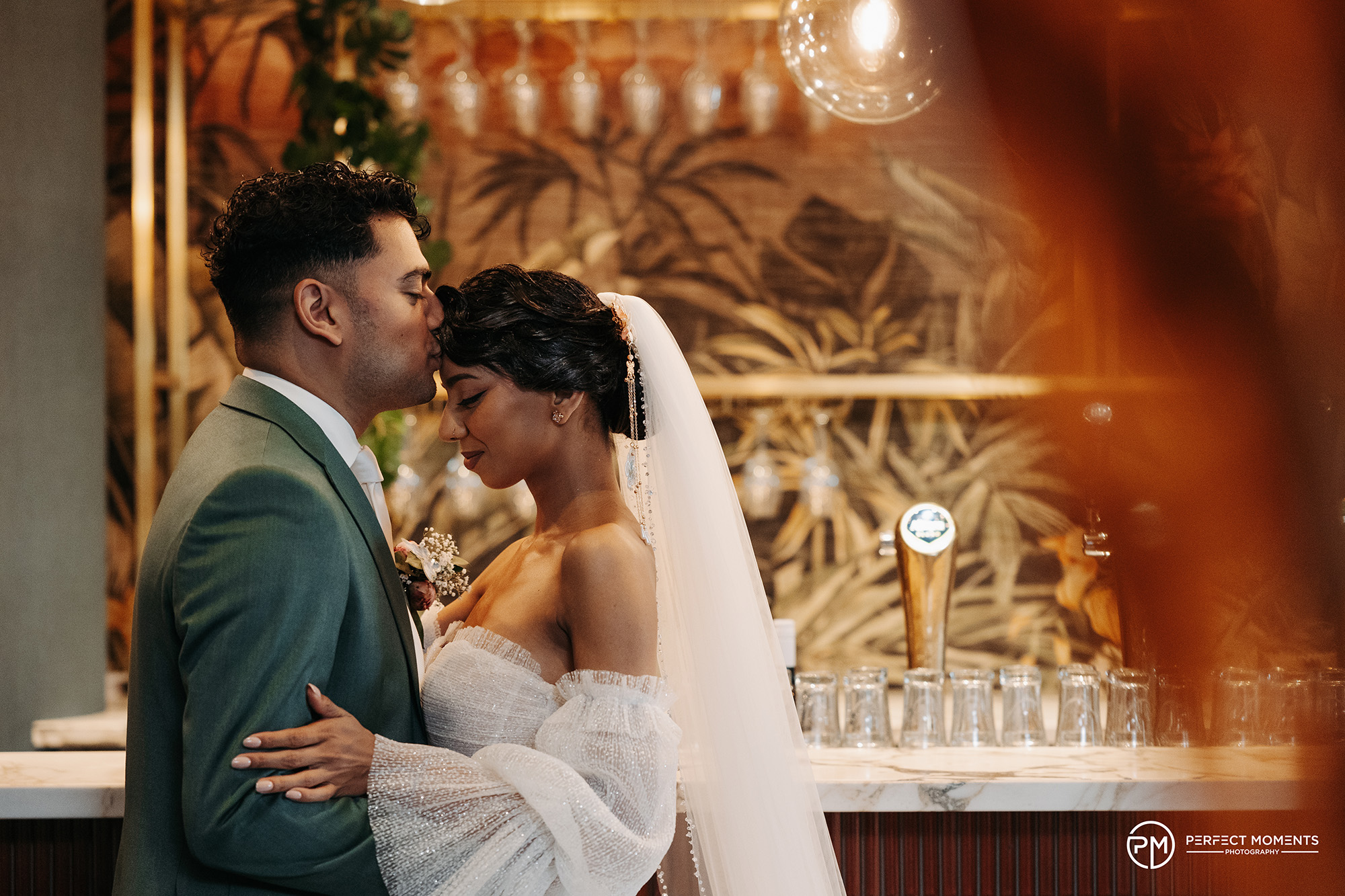
The reception is a time for the couple to relax and enjoy. It's a time to celebrate their union, to share their joy with friends and family. The reception is not just a party; it's a celebration of love, a celebration of the newlyweds' journey together.
Regional Variations: North to South Indian Wedding Traditions
India is a land of diverse cultures and traditions. This diversity is reflected in the wedding traditions of different regions. From North to South, each region has its unique customs and rituals.
In North India, the 'Baraat' and 'Saat Phere' are prominent rituals. The 'Baraat' is the groom's grand procession, while the 'Saat Phere' involves the couple taking seven rounds around the sacred fire.
South Indian weddings, on the other hand, are known for their simplicity and elegance. The 'Kashi Yatra' and 'Talambraalu' are unique to South Indian weddings.
In the West, Gujarati and Maharashtrian weddings have their distinct customs. The 'Mandap Mahurat' and 'Gharchola' are significant rituals in these regions.
South Indian Wedding Traditions
South Indian weddings are known for their simplicity and elegance. The rituals are deeply rooted in tradition and are performed with utmost devotion.
The 'Kashi Yatra' is a unique ritual where the groom pretends to leave for Kashi but is stopped and brought back to marry. It's a humorous ritual that showcases the groom's commitment to the bride.
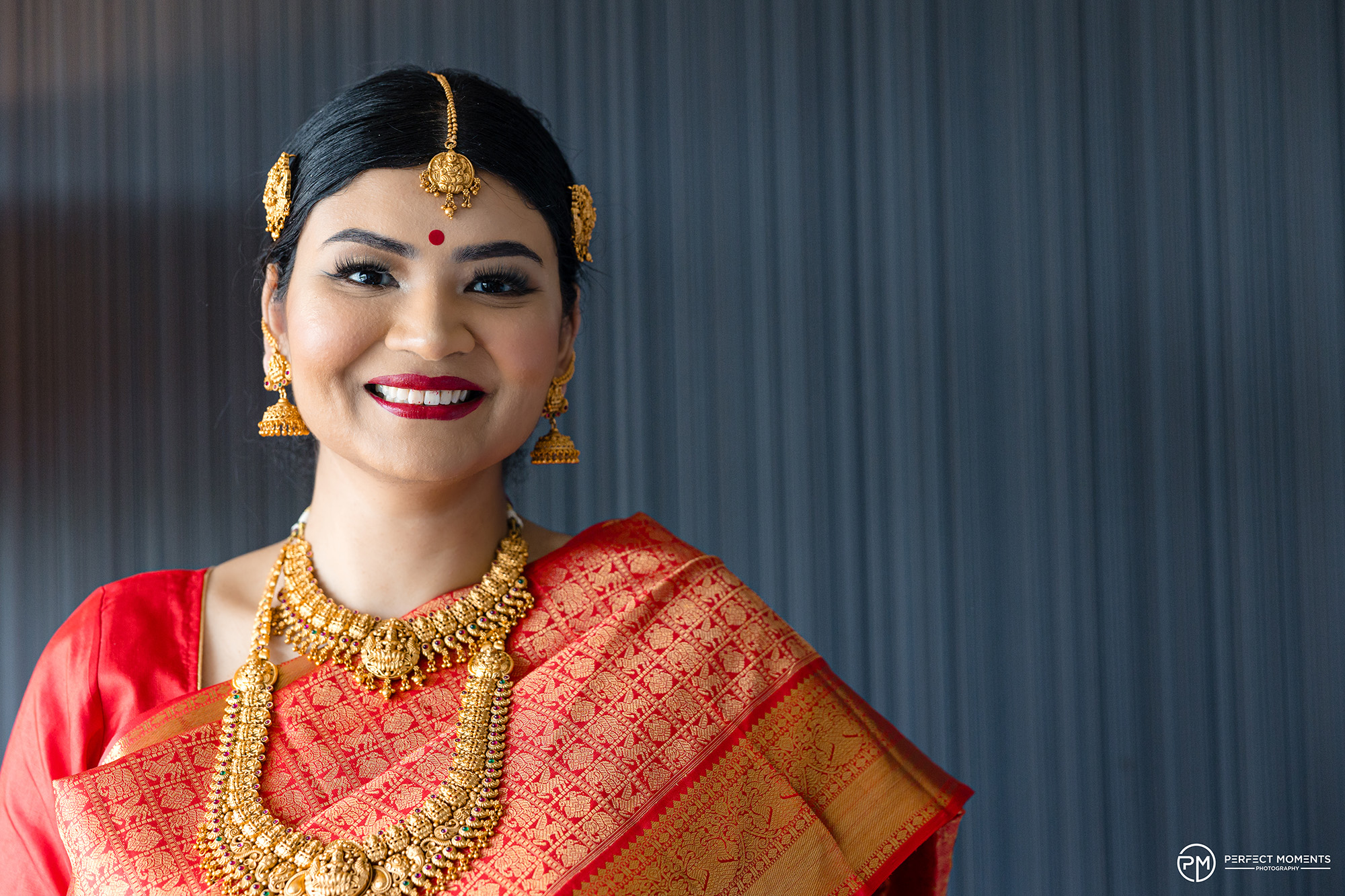
The 'Talambraalu' ritual involves the couple showering each other with pearls or small balls of colored rice. This ritual symbolizes prosperity and happiness.
Punjabi and Sikh Wedding Customs
Punjabi and Sikh weddings are known for their vibrancy and grandeur. The rituals are filled with music, dance, and merriment.
The 'Anand Karaj' ceremony in Sikh weddings includes the 'Laavan' or four hymns. It's a sacred ritual that signifies the couple's union.
The 'Chooda' and 'Kalire' are significant accessories worn by Punjabi brides. These accessories symbolize beauty and marital bliss.
Gujarati and Maharashtrian Wedding Rituals
Gujarati and Maharashtrian weddings have their distinct customs. The rituals are deeply rooted in tradition and are performed with utmost devotion.
The 'Mandap Mahurat' is a ritual to bless the wedding venue before the ceremony begins. It's a significant ritual in Gujarati weddings.
The 'Gharchola' is a traditional bridal attire in Gujarati weddings. It's a red or green saree with a grid pattern, symbolizing marital bliss and prosperity.
Indian Wedding Attire and Accessories
Indian wedding attire is a vibrant display of colors, designs, and craftsmanship. The traditional attire varies across different regions, reflecting the diversity of Indian culture.
For brides, the 'Lehenga' or 'Saree' is the traditional attire. These are often adorned with intricate embroidery and embellishments. The color red is considered auspicious and is commonly chosen for wedding attire.
Grooms typically wear a 'Sherwani' or 'Kurta'. These are long, coat-like garments, often paired with a 'Churidar' or loose trousers. The groom's attire is usually in rich, dark colors like maroon or navy blue.
Accessories play a significant role in Indian weddings. For brides, these include the 'Mangalsutra', 'Sindoor', and 'Chooda'. For grooms, accessories include the 'Turban', 'Kilangi' (a brooch pinned on the turban), and 'Mojari' (traditional footwear).
Indian Wedding Gift Traditions
Gift-giving is an integral part of Indian wedding traditions. It's a way to express joy, love, and best wishes for the newlyweds. The type of gifts often depends on the closeness of the relationship.
Traditional gifts include gold jewelry, sarees, and household items. Gold, in particular, is considered auspicious and a symbol of wealth and prosperity. It's often gifted in the form of jewelry or coins.
In recent times, modern gifts like electronics, home decor, and personalized items have also become popular. Regardless of the gift, the sentiment behind it is what truly matters.
Capturing Memories: Indian Wedding Photography
Indian weddings are a visual feast. They are filled with vibrant colors, emotional moments, and intricate details. Capturing these elements is the role of Indian wedding photography.
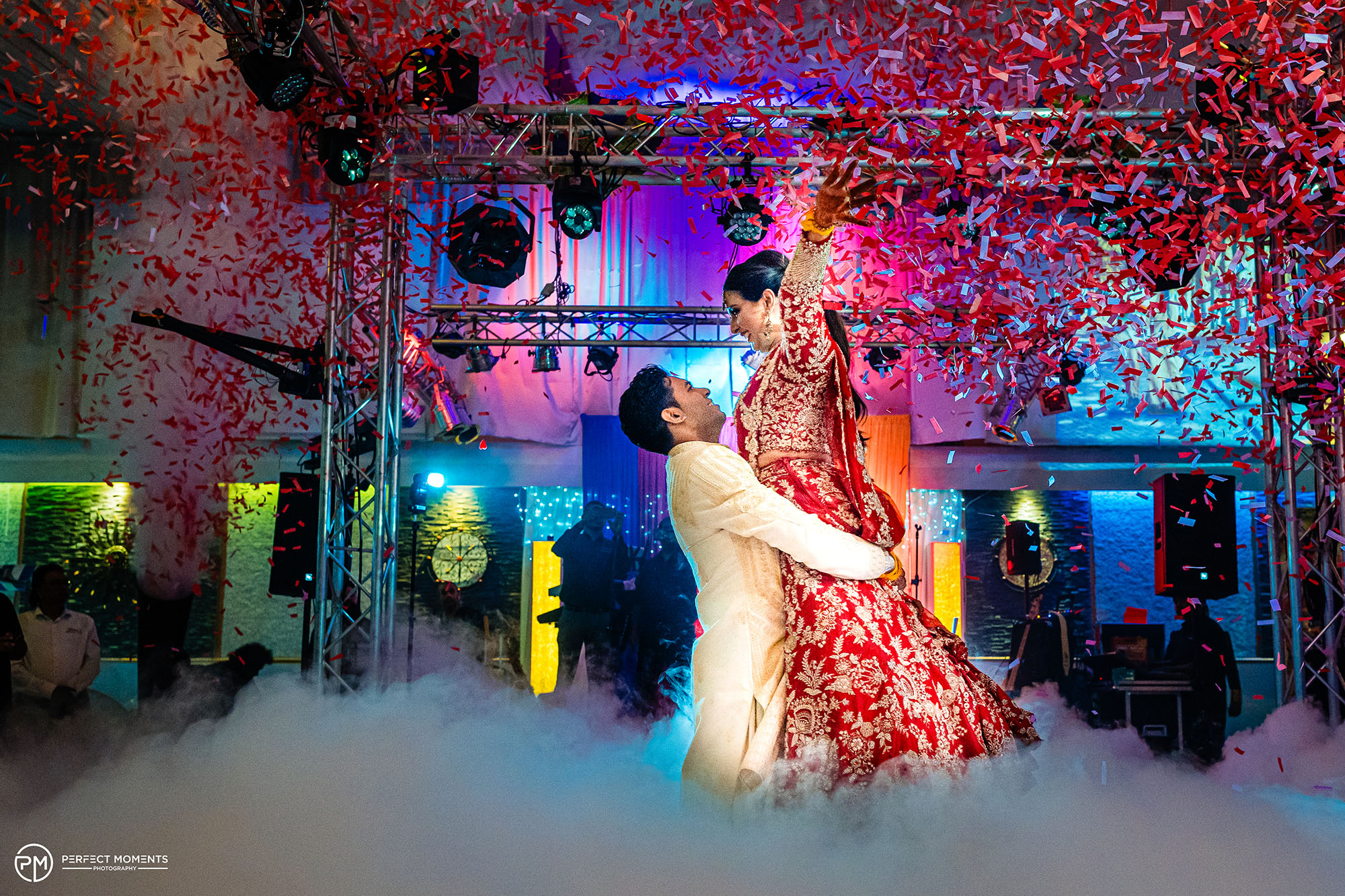
The Role of the Indian Wedding Photographer
An Indian wedding photographer does more than just take pictures. They tell a story. They capture the essence of the wedding, the joy, the tears, and the myriad of emotions that unfold.
They document the traditions, the rituals, and the cultural nuances that make each Indian wedding unique. Their lens brings to life the rich tapestry of an Indian wedding.
Trends in Indian Wedding Photography
In recent years, candid photography has gained popularity in Indian weddings. This style captures spontaneous, unposed moments, adding a touch of authenticity and raw emotion to the wedding album.
Drone photography is another trend that has taken Indian wedding photography by storm. It offers a unique perspective, capturing the grandeur of the wedding venue and the scale of the celebrations.
Black and white photography is also making a comeback. It adds a timeless, classic touch to the wedding photos, highlighting the emotions and expressions over the colors.
Conclusion: The Timeless Charm of Indian Weddings
Indian weddings are a beautiful blend of age-old traditions and modern trends. They are a celebration of love, unity, and the coming together of two families. Each ritual, each ceremony, holds a special significance, adding to the charm of the wedding.
Despite regional variations and personal preferences, the essence of an Indian wedding remains the same. It's a grand affair, filled with joy, laughter, tears, and countless memorable moments.
In conclusion, Indian weddings are a testament to the rich cultural heritage of India. They are a spectacle of colors, emotions, and traditions that continue to captivate and fascinate people worldwide.

